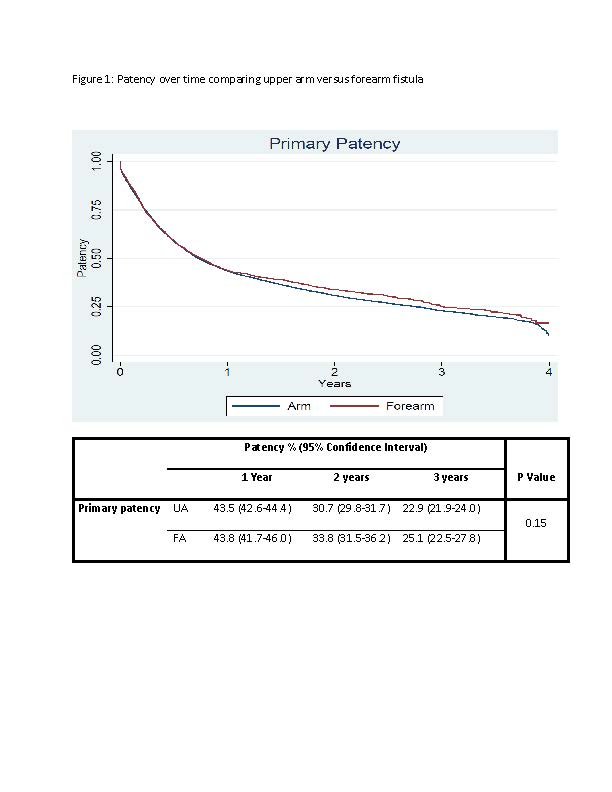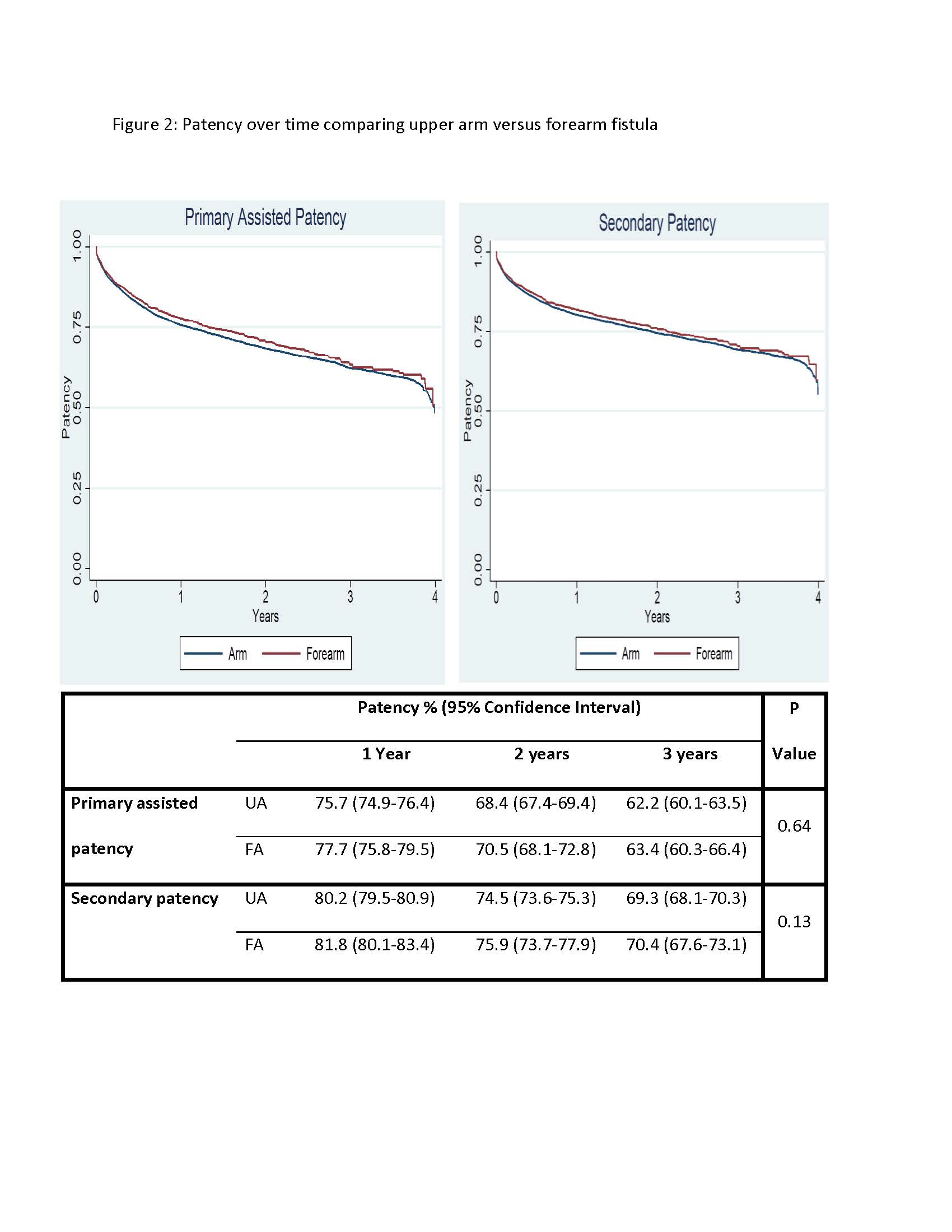Back to 2016 Annual Symposium Abstacts
Proximal versus Distal Fistula for Hemodialysis Access, Sacrificing Dogma for Functional First Fistula
Isibor Arhuidese, MD MPH, Tammam Obeid, MD, Christopher Abularrage, MD, Besma Nejim, MD MPH, Devin Zarkowsky, MD, Mahmoud Malas, MD MHS.
Johns Hopkins Medical Institutions, Baltimore, MD, USA.
Objectives: The classic teaching on fistula creation for hemodialysis (HD) access is to construct the fistula at the most distal location feasible so as to save proximal locations for later. Although prior studies have established a higher maturity rate for upper arm (UA) vs. forearm (FA) fistulas, studies on the impact of location on the durability of upper extremity fistulas after they mature are limited. The objective of this study is to perform a larger population based comparison of the durability of upper arm (UA) and forearm (FA) fistulas for HD access.
Methods: A retrospective study of all patients in the United States Renal Database System, who had upper extremity fistulas placed for HD access between January 2006 and December 2010.Kaplan-Meier, Cox regression and log-rank tests were used to evaluate time to loss of patency and identify its predictors. Outcomes were defined and analyzed per SVS standards and patients were followed up for a minimum of one year.
Results: There were 22584 (UA: 86%; FA: 14%) fistulas placed for HD access in this cohort. Patients who received UA vs. FA had similar age (both 60 years), BMI (both 29), and comorbidities (all p=NS). There were no significant difference in primary (HR: 0.97 95%CI: 0.91-1.03, P=0.296), primary assisted (HR: 0.99 95%CI: 0.89-1.08, P=0.675) and secondary patency (HR: 0.98 95%CI: 0.88-1.09, P=0.726) for FA compared to UA fistulas (Figure 1&2). There was also no significant difference (OR: 1.1 95%CI: 0.95-1.25, P=0.234) in the number of interventions required to achieve patency. The predictors of loss of patency were diabetes mellitus (HR: 1.08 95%CI: 1.03-1.14, P<0.001), physical dependence (HR: 1.16 95%CI: 1.05-1.30, P=0.005) and high BMI (HR: 1.01 95%CI: 1.01-1.01, P=0.01).
Conclusions: To our knowledge this is the largest contemporary study to compare the durability of UA vs FA fistulas. There was no significant difference in primary, primary assisted and secondary patency. The use of distal location for initial fistula does not compromise patency.


Back to 2016 Annual Symposium Abstacts
|








